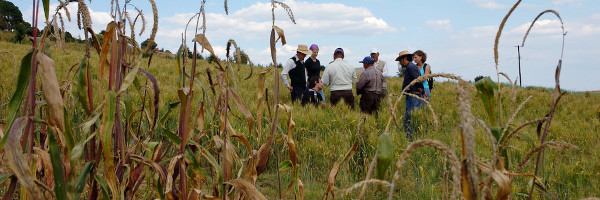Conservation Agriculture
| Agriculture | |
|---|---|

| |
| Sectors | Agriculture |
| Contact | Wilfred Pinfold |
| Topics | |
- Authors
Conservation agriculture (CA) is a farming system that emphasizes the use of sustainable practices to protect the natural resources and biodiversity, while maintaining or increasing crop yields.
It is based on three main principles: minimum soil disturbance, permanent soil cover, and diversification of crop rotations.
The main practices of Conservation Agriculture include:
Minimum soil disturbance: This principle involves using minimal tillage methods, such as using a no-till drill to plant crops, to reduce soil erosion and maintain soil structure. Permanent soil cover: This principle involves maintaining a permanent cover of plants, such as cover crops, to protect the soil from erosion and improve its fertility. Diversification of crop rotations: This principle involves rotating crops to reduce pest and disease pressure, improve soil health, and increase yields. The benefits of Conservation Agriculture include:
- Increased soil health and fertility, which leads to improved crop yields and resilience to drought and extreme weather events.
- Reduced erosion and sedimentation, which improves water quality and protects aquatic ecosystems
- Reduced input costs, such as fuel and labor, by reducing the need for tillage and other soil management practices
- Increased biodiversity and ecosystem services, by supporting a wide range of plant and animal species
- Improved soil carbon sequestration, which can help to mitigate the effects of climate change
However, there are also some challenges associated with Conservation Agriculture, such as:
- Initial investment costs, such as buying specialized equipment and seeds.
- Adaptation to certain conditions, such as rocky or heavily compacted soils, may be difficult.
- It may not be suitable for certain crops, such as those that require frequent tillage to control weeds.
Conservation agriculture is a farming system that emphasizes the use of sustainable practices to protect the natural resources and biodiversity, while maintaining or increasing crop yields. It's a promising approach to farming which offers many benefits, but it also requires a significant investment of time and effort to implement successfully.
